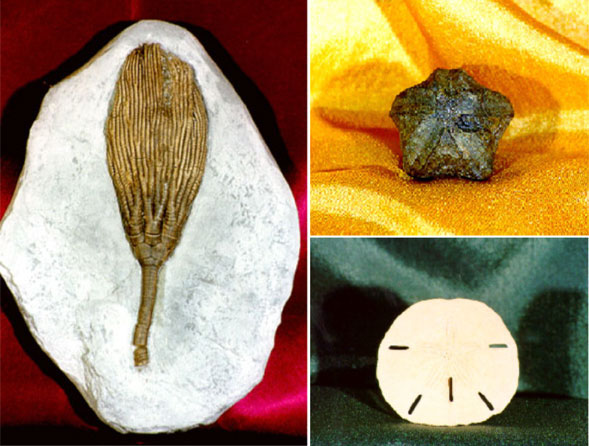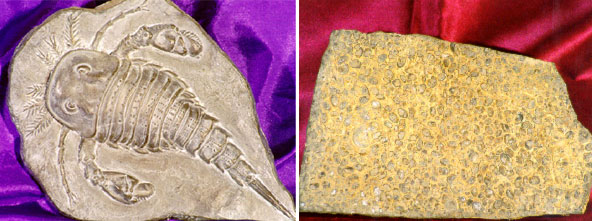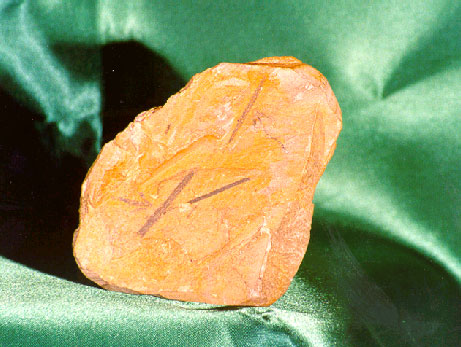
Invertebrate Animals (Part 3)
Echinoderms
Echinoderms include starfish, crinoids, and sand dollars. The name means “spiny skin.” Important fossil groups are shown below: crinoids (left), blastoids (top right), and echinoids (bottom right). Crinoids and blastoids are attached to the sea floor with columns. Echinoids are free-moving echinoderms.

Echinoderms (Photographs by Parvinder Sethi)
Arthropods
Arthropods have jointed legs and bodies, and include such familiar groups as insects and spiders. Three important fossil groups are shown below: trilobites (top), eurypterids (bottom left), and ostracods (bottom right).

Trilobite (Photograph by Parvinder Sethi)

Left: Eurypterid; right: ostracods (Photographs by Parvinder Sethi)
Graptolites
Graptolites were extremely abundant in Paleozoic oceans. They existed from the Cambrian to the Mississippian. The carbonized fossils shown here were part of larger colonies. These organisms may have been transitional between the invertebrates and the vertebrates.

Graptolites (Photograph by Parvinder Sethi)